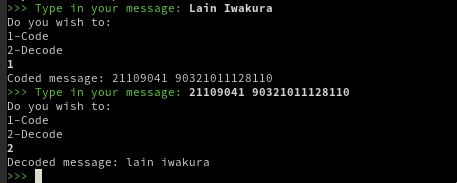I’m quite the paranoid person, not as much as some other people online, but far more than the average person). During high school, while dealing with the shitfest that is mental illness, I read somewhere that writing down what I’m feeling could help so I started doing that, but there’s the issue: I don’t want anyone to be able to understand what I’m writing, while this could be done simply by writing in English (I don’t live in an anglophone country), my paranoia screamed louder so I decided to encrypt it.
Now, it had to be something simply enough I could encrypt in the fly, already writing in an encrypted manner, so a simple substitution cipher like Caesar’s should do the job, but despite the fact that most people when faced with a bunch of random letters would just give up and it worked fine, my paranoia screamed again that I should go for something less known, so I made up my own system.
It isn’t good, it isn’t really safe, and it was actually useless. Every time I finished writing I’d tear up the paper in as many pieces as I could to avoid someone (fucking who!?!?) analyzing it and breaking it, so I never really decoded any thing I wrote with this system, I could just have drawn random lines while thinking about my problems and it would have the same practical effect.
It did work once, I finished my school exams early and got to vent on the paper, the teacher suspected that I could be helping other cheat, but as soon as he saw it was a bunch of random numbers splattered around he figured it was hidden message that no one on the classroom would understand anyway and let me be.
Still, remembering it, I for fun decided to write a Python program, so here it is, named after my gamertag/internet alias from back then, the Hamyz Cipher, or more precisely described, reversed alphabetical substitution

To use just run ./HamyzCipher.py